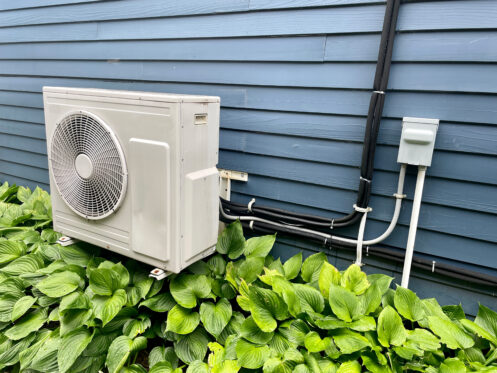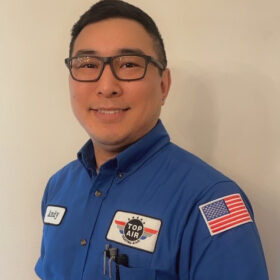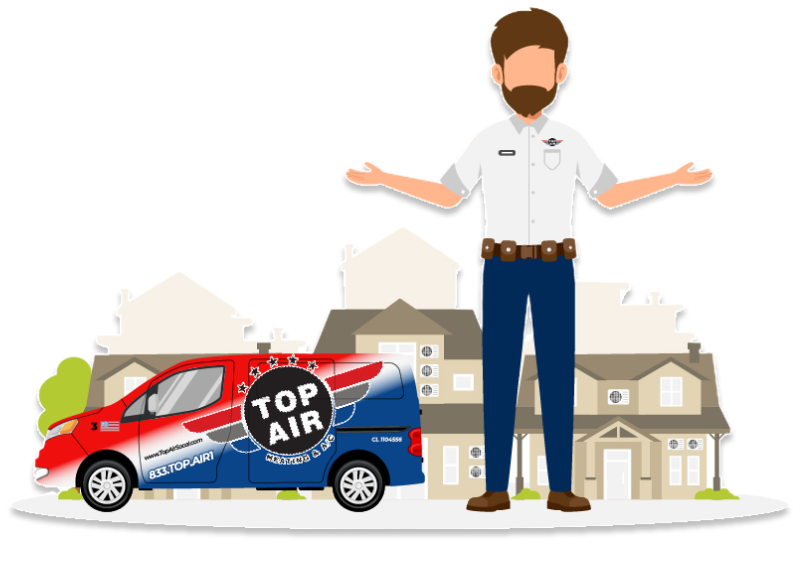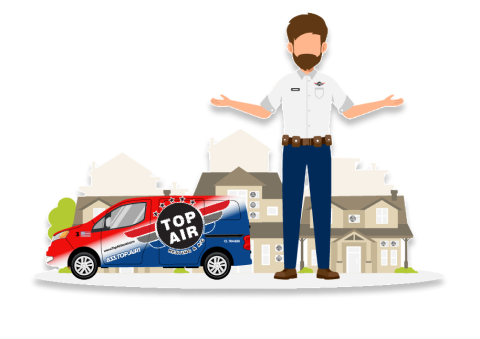Furnaces are the most popular solution for home heating in the U.S. and have been for many decades. Heat pumps outsold furnaces for the first time in 2023, and experts expect that trend to continue. Let’s explore which solution is the best for your home.
Heat Pumps
Heat pumps are similar to air conditioners in that they use electricity to move heat from one space to another. In the summer, they move heat from inside your home to the outside. The main difference with a heat pump is that it has a reversing valve that allows for a heating mode. In winter, it moves heat from outside your home to the inside.
Furnaces
Furnaces are quite different in that they generate heat rather than move it. Most homes with furnaces have fuel-burning systems. Those burn natural gas, liquid propane, or heating oil to produce heat. There are also electric furnaces, which use electricity to power a heating element that heats the air around it.
Cold Weather Performance
The most common type of heat pump is the air-source heat pump, which moves heat to and from the ambient air. There are also geothermal heat pumps, which move heat to and from the ground or a large body of water. The downside to relying on the ambient air is that there’s limited heat in the air during winter. That means that each air-source heat pump has a cold-temperature threshold at which it’s no longer effective. Geothermal systems don’t have this issue since heat is more abundant in the ground. Furnaces also don’t have this problem. Since they generate heat, they deliver the same efficiency no matter the temperature outside.
Energy Efficiency
Heat pumps are much more efficient than furnaces generally. Furnaces need a great deal more fuel or electricity to generate the same amount of heat a heat pump moves. That means that your operating costs will be lower and your household carbon footprint will be smaller. Of course, that assumes you have a heat pump with a low enough threshold for your climate. Below that threshold, the furnace will actually be more efficient.
Dual-Fuel Heat Pumps
Heat pumps have long been popular in climates with mild winters. Modern innovations have made them a more practical option in colder climates. Still, heat pumps that can maintain efficiency at low temperatures can be quite expensive. A popular alternative is to pair a heat pump with a furnace. The industry calls this a dual-fuel heat pump or hybrid heating. The system uses the heat pump down to its cold-weather threshold. At that point, it switches over to the furnace for heat.
Electric or Fuel Heat
Electric furnaces are an option, but they’re far more uncommon than fuel-burning systems. The reason for this is the cost of electricity. While electric furnaces are more efficient than their fuel-burning counterparts, they’re often not cost-effective. As for fuel, heat pumps and air conditioners are electric systems. Even those setups that burn fuel, which are very uncommon, do so to convert it into electricity.
Energy Incentives
The federal government incentivizes the transition to heat pumps through the HEEHRA rebate program. That rebate is worth up to $4,000 or $8,000 depending on your income. The federal government also offers a nonrefundable tax credit worth up to $1,200 for either a heat pump or furnace. Note that you can’t combine the rebate and tax credit.
There are also local rebates available, such as through your local utility company. You can typically combine the HEEHRA rebate with a local rebate. All of the incentives discussed here require an ENERGY STAR product. That can often be more practical with a heat pump since many systems on the market have that certification. With furnaces, the Environmental Protection Agency generally limits certification to condensing furnaces. Those can be expensive relative to traditional noncondensing furnaces.
Lifespan and Total Cost
The typical lifespan for heat pumps and furnaces is 15 and 20 years, respectively. Despite that, a heat pump will usually provide a lower total cost in warm and moderate climates. Furnaces will usually provide a lower total cost in colder climates.
Would You Like to Install a Heat Pump or Furnace?
Top Air Heating & A/C serves homeowners in West Covina and throughout Southern California. Our NATE-certified technicians install all heat pump and furnace brands on models. Our team also installs, maintains, and repairs central air conditioners and ductless mini-splits. We install, maintain, and repair ductwork. You can also count on us for insulation and indoor air quality equipment. Contact us today to learn more about these heating system options and to schedule an appointment.




